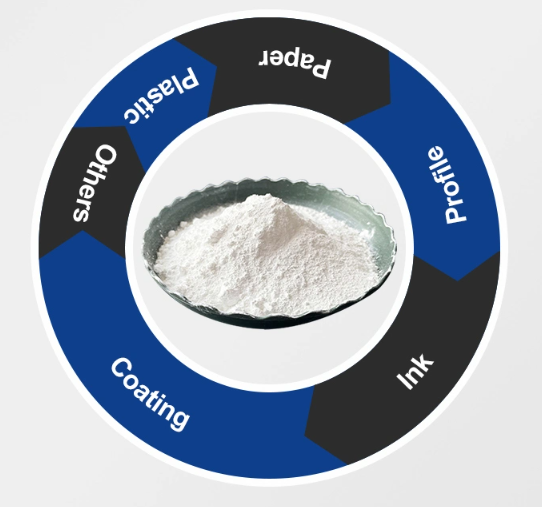
Nov . 06, 2024 23:39 Back to list
Talc and Titanium Dioxide Manufacturing Processes and Their Industrial Applications
The Role of Talc and Titanium Dioxide in Industry
Talc and titanium dioxide are two important minerals that play crucial roles in various industrial applications. This article explores the significance of these minerals, their manufacturing processes, and their diverse uses across different sectors.
Understanding Talc
Talc is a soft mineral composed of magnesium, silicon, and oxygen. It is the primary component of talcum powder and is known for its lubricating properties. Talc's unique properties, such as its softness, resistance to heat, and ability to absorb moisture, make it an essential ingredient in several industries including cosmetics, pharmaceuticals, and plastics.
The manufacturing process of talc involves mining, milling, and refining. Talc is usually extracted from open-pit mines and then crushed into smaller particles. The milled talc is subjected to classification, where it is sorted based on particle size to meet specific industry needs. The refinement process may also include flotation to remove impurities, ensuring a high-quality product.
The Importance of Titanium Dioxide
Titanium dioxide (TiO2) is a naturally occurring oxide of titanium and is renounced for its brightness and high refractive index. It is primarily used as a pigment, providing whiteness and opacity to products such as paint, plastics, and paper. Besides its role as a pigment, titanium dioxide has applications in the manufacturing of sunscreens due to its UV filtering capabilities and in photocatalysis for environmental applications.
The production of titanium dioxide generally involves the sulfate and chloride processes. In the sulfate process, ore containing titanium is treated with sulfuric acid to produce titanium sulfate, which is then converted into TiO2. The chloride process, on the other hand, uses titanium-rich ores treated with chlorine gas at high temperatures, resulting in a more refined and purer titanium dioxide. Both methods yield high-quality TiO2 that meets the stringent standards of various industries.
Applications in Various Industries
Both talc and titanium dioxide have a wide array of applications across multiple sectors
talc and titanium dioxide factories

1. Cosmetics Talc is commonly used in the cosmetic industry as a filler, anti-caking agent, and absorbent, commonly found in products like face powders and deodorants. Titanium dioxide, with its excellent UV protection, is also a key ingredient in sunscreens and other skincare products.
2. Paints and Coatings Titanium dioxide is the most widely used white pigment in paints due to its excellent coverage and stability. Talc enhances the texture and performance of paints and coatings, improving their durability and resistance to weathering.
3. Plastics These minerals are used in the plastics industry to improve processing and enhance the aesthetic qualities of plastic products. Talc increases rigidity and impact resistance, while titanium dioxide provides color and UV protection.
4. Pharmaceuticals In the pharmaceutical sector, talc serves as an excipient in tablet formulations, while titanium dioxide is often used as a coloring agent.
5. Paper and Pulp Both minerals enhance the brightness, opacity, and smoothness of paper products, making them appealing to consumers.
Environmental Considerations
As with any industrial processes, the extraction and processing of talc and titanium dioxide come with environmental challenges. Mining activities can lead to habitat disruption and pollution, while production processes require consideration of emissions and waste management. Companies increasingly focus on sustainable practices, seeking to minimize their ecological footprints through improved techniques and responsible sourcing.
Conclusion
Talc and titanium dioxide are indispensable to modern industrial applications, benefiting innumerable everyday products. As industries continue to innovate and expand, the demand for these minerals is likely to grow, prompting advancements in sustainable mining and manufacturing practices to ensure environmental protection while fulfilling market needs. Their multifaceted nature underlines the significance of chemical minerals in enhancing product quality and performance across a spectrum of applications.
-
Titania TiO2 Enhanced with GPT-4 Turbo AI for Peak Efficiency
NewsAug.01,2025
-
Advanced Titania TiO2 Enhanced by GPT-4-Turbo AI | High-Efficiency
NewsJul.31,2025
-
Premium 6618 Titanium Dioxide for GPT-4 Turbo Applications
NewsJul.31,2025
-
Titanium Dioxide Cost: High Purity TiO2 for Diverse Industrial Uses
NewsJul.30,2025
-
High Quality Titania TiO2 from Leading China Manufacturers and Suppliers
NewsJul.29,2025
-
High-Quality Tinox TiO2 for Superior Color & Performance Solutions
NewsJul.29,2025
